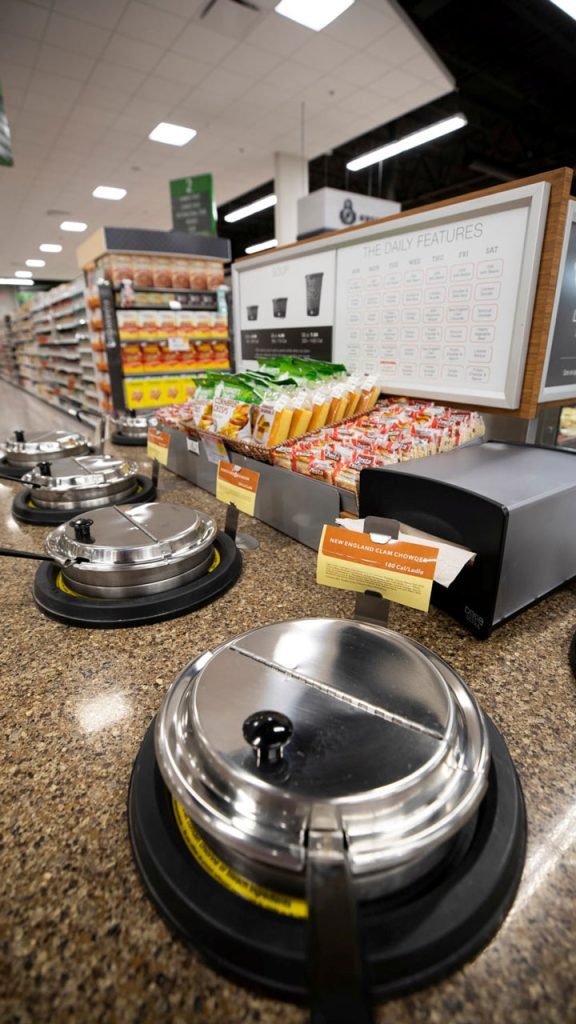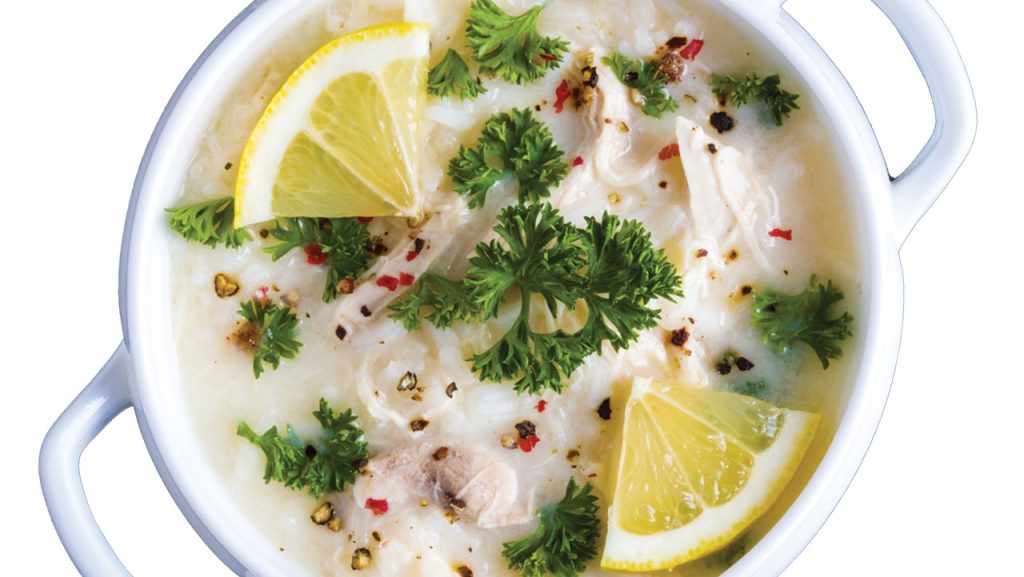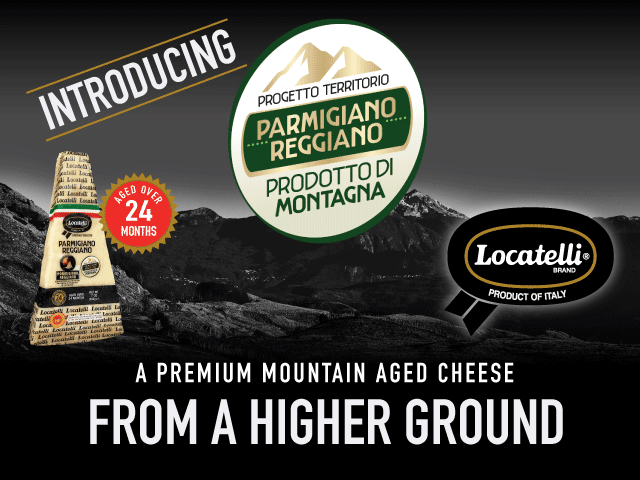Summer is the Time to Plan for a ‘Soup-er’ Fall & Winter
May 20, 2025 | 7 min to read
At Publix Super Market, fresh soups are a convenient meal solution, featuring a range from comforting classics to trendy flavors. With over 1,400 locations offering a daily soup bar and grab-and-go options, the deli attracts variety-seeking customers. Soup sales have seen significant growth, highlighting demand for familiar comfort foods alongside innovative global selections. Retailers are encouraged to create dedicated soup destinations, promoting repeat purchases and larger basket sizes while enhancing visibility and quality.

Fresh soups in the deli offer a quick meal solution.
Walk into the deli at a Publix Super Market and find that soup du jour awaits. There’s everything from comfort favorites, like chicken noodle and New England clam chowder, to cooler flavors, like turkey sausage, kale and quinoa and Mexican-style street corn soups.
Many of the 1,400 southeast locations of this Lakeland, FL-headquartered chain have a hot soup bar. There are four ready-to-eat selections daily, with 12-, 16- or 32-ounce cup sizes to satisfy singles or the family circle, with gratis go-withs like saltines.
A menu at the top of the display lists the day’s soups. Steps away in a refrigerated multideck grab-and-go case are nationally branded soups ready-to-heat and eat. This case also holds pre-made sandwiches, wraps and salads. Near the retailer’s hot soup bar, customers can also order made-to-order subs, often as a meal deal combo.
Publix is one of hundreds of retailers nationwide putting stock in its soup program, creating a one-stop shop destination for a quick meal that rivals quick and casual restaurants.
“Fresh soups in the deli are a magnet for customers as they are a satisfying grab-and-go item that offers a quick meal solution without compromising on quality or flavor,” says Joe Jolly, chief executive officer of the Plenus Group, Inc. (PGI), in Lowell, MA, which sells its soups under the Boston Chowda and Herban Fresh brands.
Moreover, 75% of shoppers buy groceries where they purchase hot food, according to Bob Sewall, chief customer officer and executive vice president of sales and marketing for Blount Fine Foods in Fall River, MA. “Consider that younger customers are buying more soup today, and this customer shops two to three times per week.”
SOUP SETS THE SCENE
Soup in mankind’s diet is likely as old as the history of cooking. The act of boiling bits and pieces of meat, grains, beans, and veggies in a big kettle is common in nearly every culture. For starters, there’s New England clam chowder, Cuban black bean, Italian minestrone, French onion, Russian borscht, Spanish gazpacho, and Vietnamese pho, to name a few.
Soups and chili represent almost $1 billion in sales and nearly 4% of deli-prepared food and meal sales in the supermarket deli.
The dollar change trajectory in sales is up 5.4% from a year ago and 12.6% and 37.4% versus two and three years prior, respectively, according to Circana data for the 12 months ending Oct. 6, 2024, as published in the International Dairy-Deli-Bakery Association’s What’s in Store 2025. Only 20% of households purchase deli soups and chili, showing ample room for growth.
“Soup consumption peaks from mid-September through March, making it essential for retailers to align their sets and assortments with seasonal demand throughout the year,” says Mike Seeger, vice president of Walmart and Club at Kettle Cuisine, in Lynn, MA, with Kettle Cuisine and Soup Supreme brands.
To do this, choose a captivating flavor assortment; consider a hot, cold, or hot and cold soup program; and create a deli soup destination.
HIT ALL THE FLAVOR NOTES
Comfort, trendy global flavors, and healthful are all great to promote when it comes to soups, according to Mary Shepard, director of sales and partner in Fortun Foods, Inc., in Kirkland, WA, which sells under the Stockpot Soups brand. “But it all comes down to quality, whether or not a customer is one and done or someone who comes back for repeat purchases.”
On the comfort front, PGI’s best-selling soups remain its New England Clam Chowder and Rockport Lobster Bisque, which speaks to the company’s roots as the Boston Chowda Soup line manufacturer.
“These are soups that are not normally made at home and deliver a restaurant-quality experience,” says Jolly.
PGI has a significant private label business, developing new soups to suit a retailer’s customer demographic and regional food preferences.
“For a retailer with a large Italian American customer base, we’ve created a White Bean and Escarole Soup and a Lasagna Soup that has done very well,” says Jolly. “For a retailer in New York City, Manhattan Clam Chowder and Chicken & Matzo Ball Soup are strong sellers.”
Last September, Nooish, a Chicago, IL-based company specializing in kosher, on-the-go food, introduced the first Instant Matzo Ball Soup.
“Similar to instant ramen, you add water, microwave, and voila, you have a fresh bowl of vegetarian, kosher matzo ball soup made with clean ingredients. It satisfies the trends of convenience, easy meal making, comfort food, and an interest in global flavors. Our product is certified CRC kosher pareve,” says Sarah Nathan, founder.
Tried-and-true favorites like Broccoli Cheddar, Loaded Baked Potato, and Chicken Tortilla are top sellers for Kettle Cuisine.
“There’s growing demand for comfort foods with modern twists,” says Seeger.
For younger consumers, global flavors, specifically Latin and Asian, are familiar and comforting, according to Mike Kostyo, vice president of Menu Matters, an Arlington, VT-based menu consulting firm focused on the food industry. “A Gen Z or Millennial consumer grew up eating premium ramen options, even knowing the difference between a tonkatsu and shoyu ramen. They expect to see a tortilla soup available. These options are the norm.”
These global options also speak to deeper consumer needs. They want to travel, getaway, and experience new places, and a global flavor or soup can be that little escape in the day.”
Mike Kostyo, Menu Matters, Arlington, VT
Thai Shrimp Soup, made with dairy-free coconut milk, offering an alternative to a dairy-heavy bisque, is new from Blount Fine Foods’ Clam Shack line of soups. The company, whose brands include Blount Family Kitchens and Panera, uses authentic masa in some of its products, particularly Cheesy Chicken Enchilada Soup.
“At some of the innovative global restaurants we’re tracking, you see far more Middle Eastern options, like bright, lemony lentil, squash, or bean soups. Next-level Asian options like Malaysian laksa, Thai curry soups like khao soi, and Filipino sinigang are showing up at innovative restaurants, so they should be on a deli operator’s radar,” says Kostyo.
Consumers are also driving soup innovation in the direction of “good-for-you” health-conscious soups with clean ingredients and plant-based options, says Kettle Cuisine’s Seeger. “Our newer offerings include a healthier take on the classic canned alphabet soup, called Alphabet Pasta with Beef Meatballs, and a French onion soup designed to be finished at home with gruyere and crostini for a restaurant-style experience.”
The best way to introduce new soup items, says PGI’s Jolly, “is a compelling sale offer along with a spot in the retailer’s weekly circular. In-store merchandising, like shelf tags, danglers, and counter signs, help greatly with visibility.”
Overall, in selecting the soup flavor lineup for the deli, the 80/20 rule still applies.
“The biggest sales we find are still the comfort soups and what consumers are familiar with. The interesting new flavors will sell, but consumers will still return to what is familiar,” says Fortun Foods’ Shepard.
SERVE A HOT & COLD PROGRAM
Both hot and cold soups are popular, each serving different needs.
“Hot soups drive impulse purchases and immediate consumption, while cold, ready-to-heat options offer convenience for later meals. To succeed with both, deli operators should ensure clear signage, consistent quality and strategic placement — hot soups near lunch traffic and cold soups in grab-and-go cases with cross-merchandising to encourage meal bundling,” says Seeger.
Running a successful hot soup program takes dedication from the retailer to maintain their hot bar properly, ensuring the product is kept filled and at the proper temperature to avoid the soup degrading over the selling period.
“A great synergy is when retailers have the cold soup (tubs) from the same company that supplies the hot soup program,” says Shepard.
BUILD A ‘SOUP-ER’ DESTINATION
Two big benefits of building a soup destination in the deli are repeat purchases and bigger basket rings.
“Having a dedicated space for fresh soups drives demand and builds shopper loyalty. When customers know exactly where to find them, soup becomes a routine purchase — unlike when it’s mixed into the broader deli set,” says Seeger.
PGI’s Jolly recommends creating “a wall of soup.”
“Retailers who commit to carrying a wide variety of soups experience the best sell-through. Having such a display makes soup a focus in the deli and draws people to the department,” he says.
Cross-merchandise complementary items, like salad kits, bread, or desserts in or adjacent to this soup wall, adds Kettle Cuisine’s Seeger. “Bundle soups with beverages or snacks to create meal deals and use in-store displays to suggest pairings. Offering convenient, complete meal solutions encourages shoppers to add more items to their baskets.”

Finally, rival restaurants by treating a soup bar as a meal station rather than a side dish, adds Fortun Foods’ Shepard. “Kick it up a notch with garnishing for customers to top off their soup. Give them control and tools to make a masterpiece of what they desire. Have that French bread handy to grab-and-go. Add cheese or crackers, croutons, or herbs. Build a soup bar like this, and they will come.”
15 of 17 article in DeliBusiness Summer 2025

